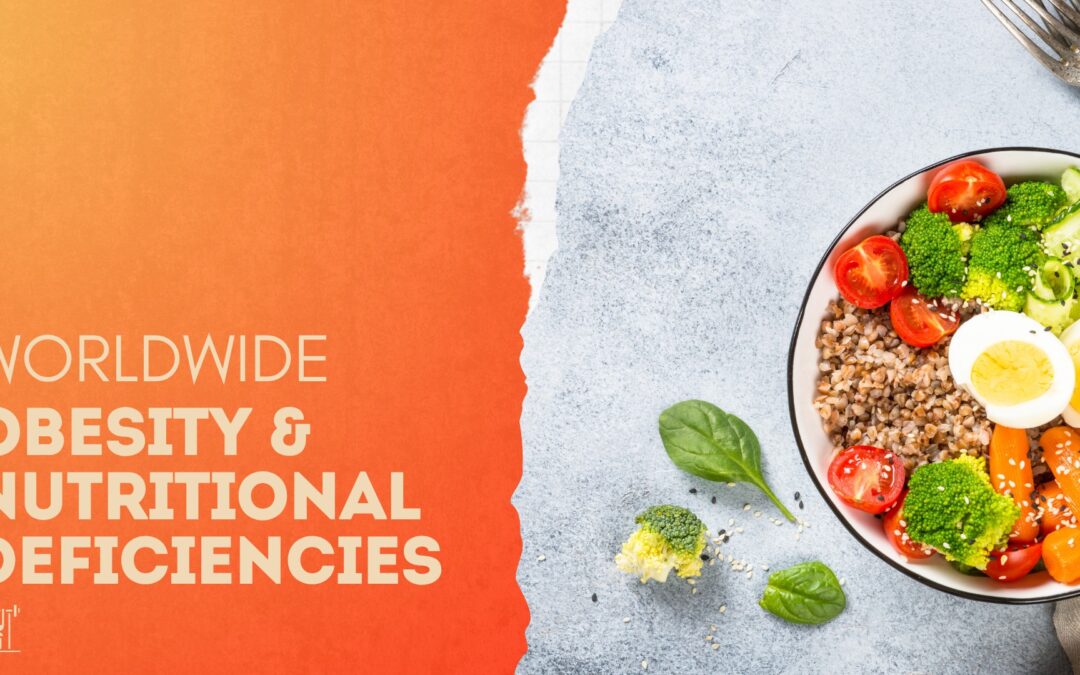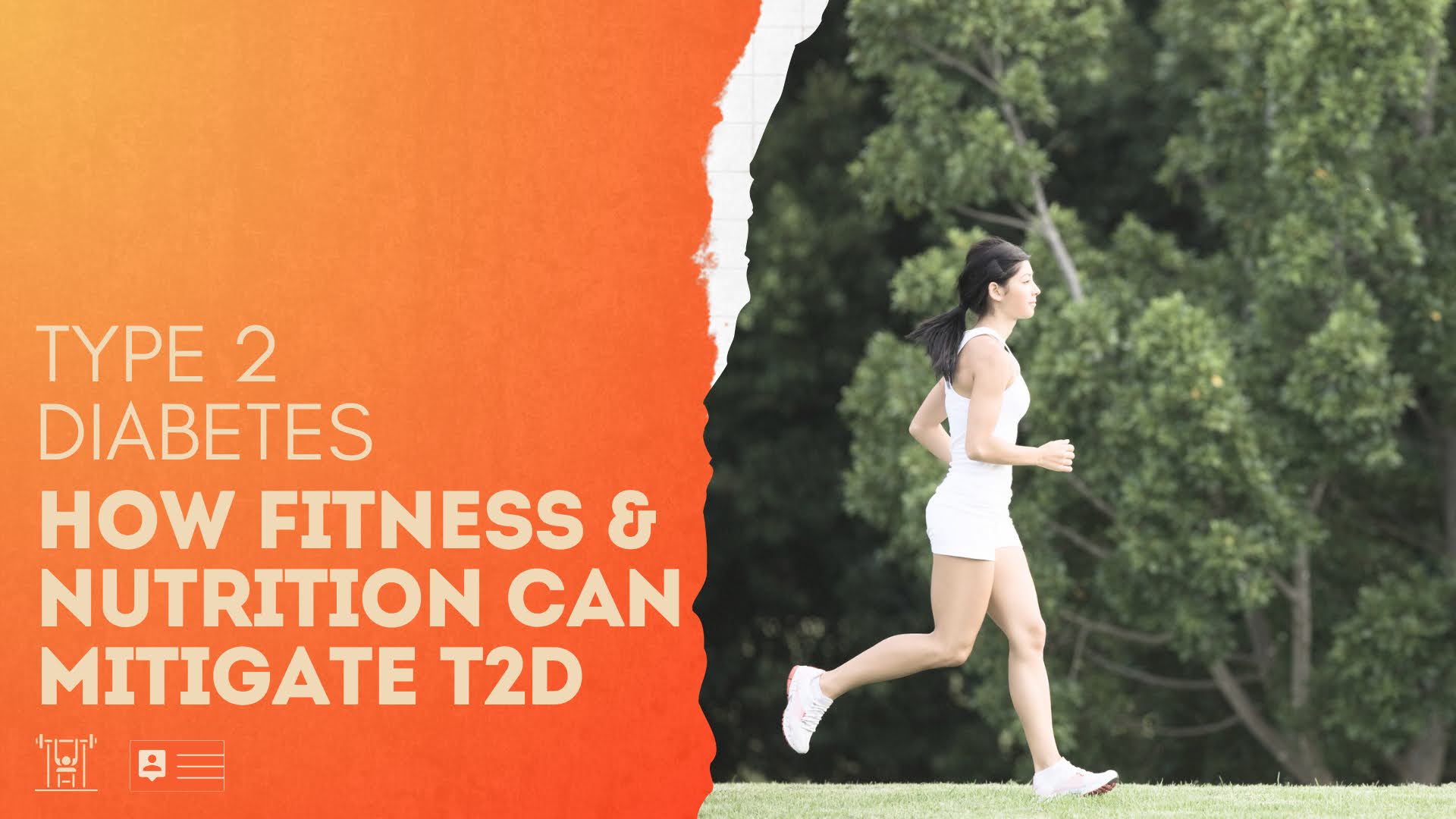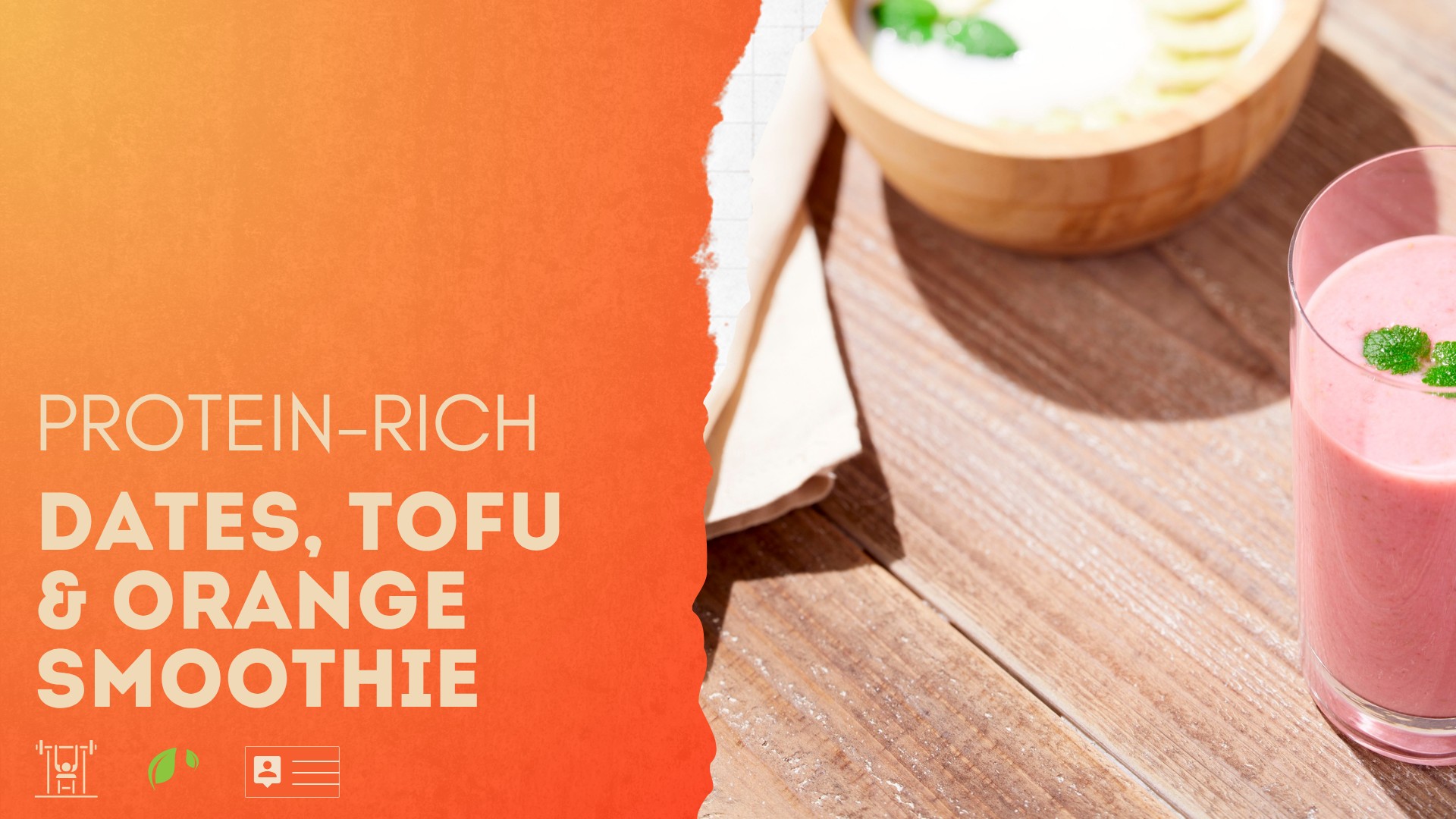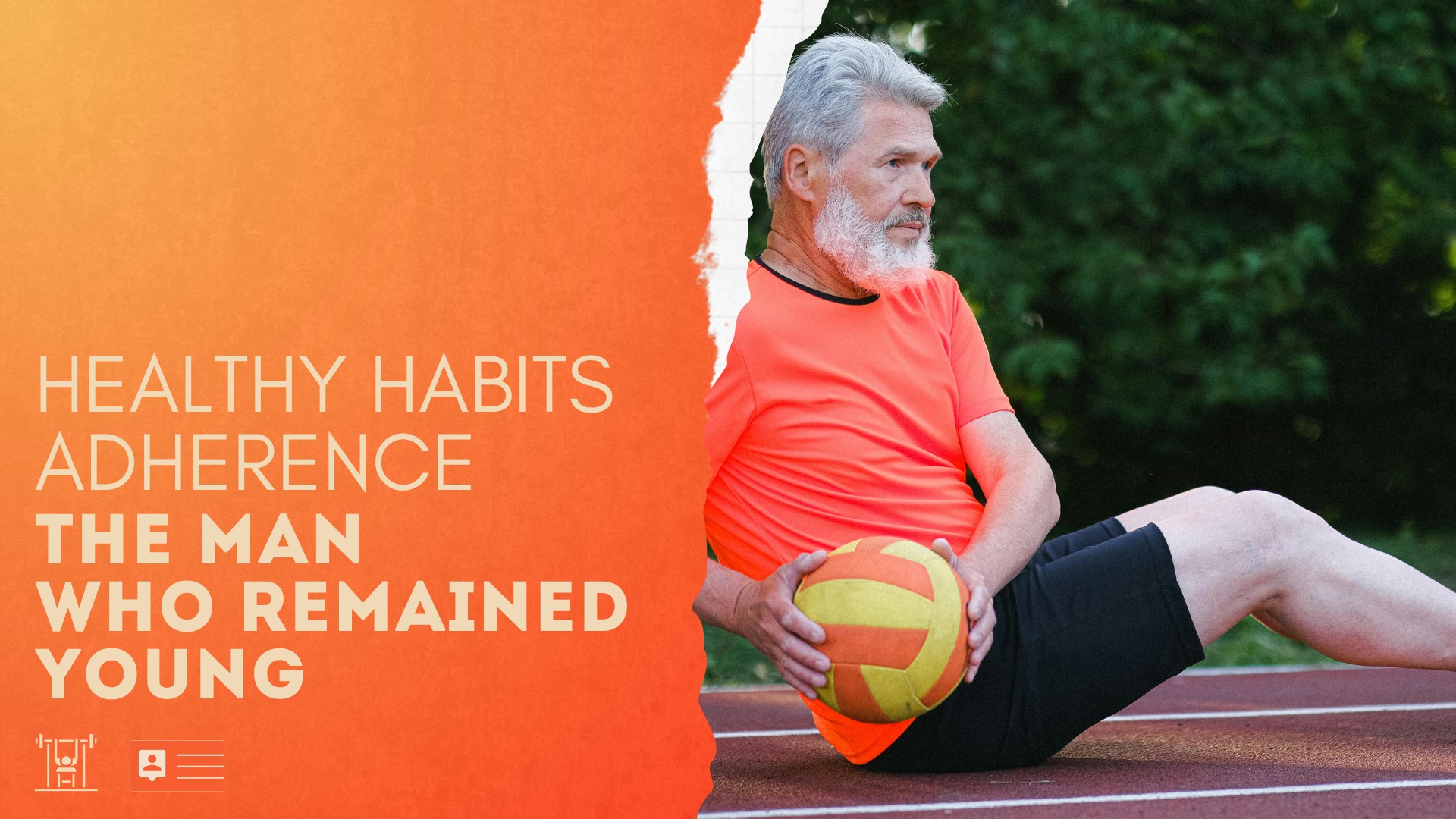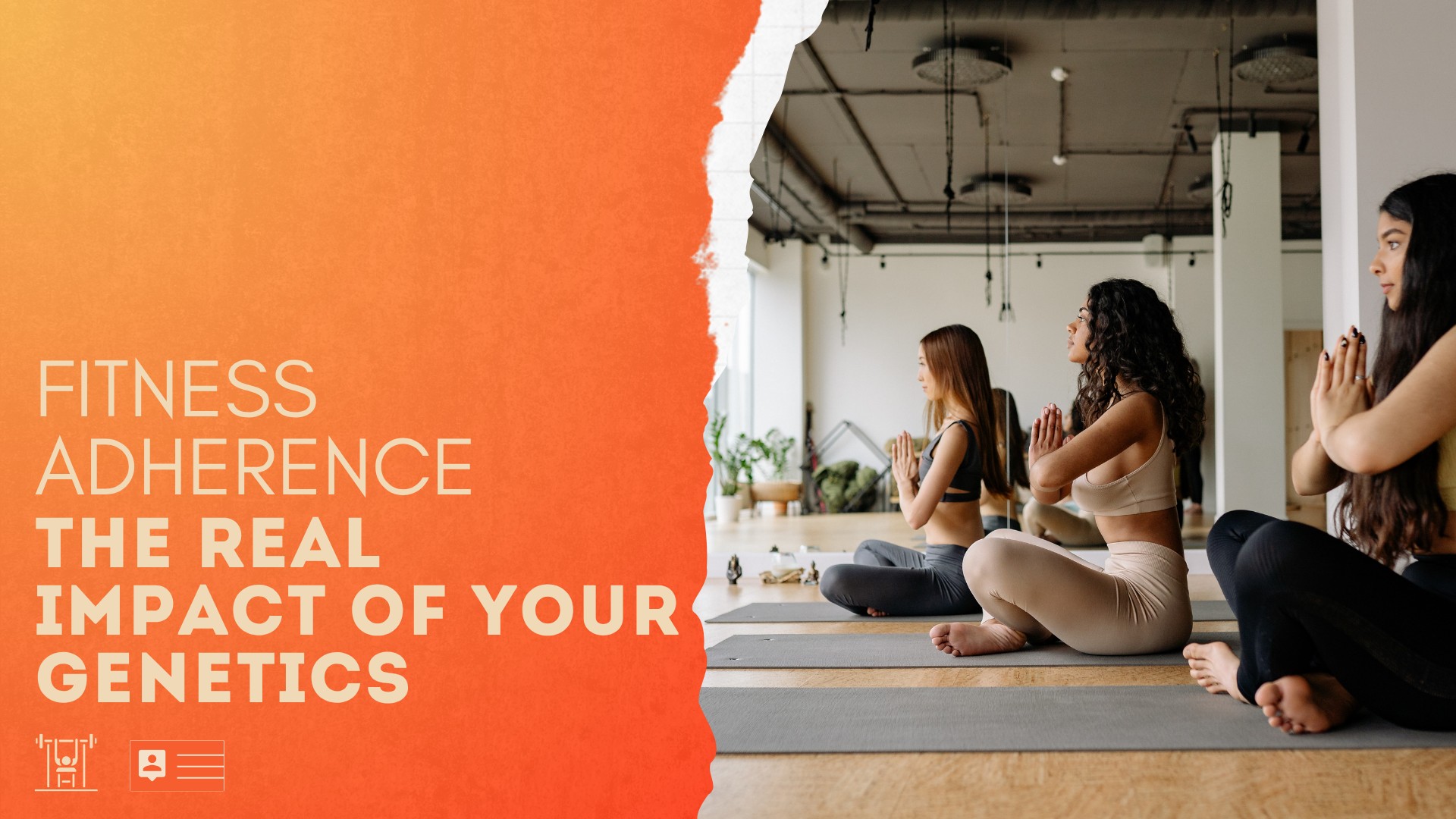
Strength By Fitness
Billions of people suffer from nutritional deficiencies.
Welcome to another fact-based article from Strength by Fitness.
Nutritional deficits.
The most important nutritional pillar is a very straightforward choice to make. Yes, I am talking about the macronutrient known as protein due to how eating more protein than the insufficient RDA recommendation leads to vastly better health outcomes, fitness progression, and capacity across our entire health span, while also providing much better body composition, in the way of less excess body fat and better lean muscle mass and organ mass.
A high-protein approach is, however, not the be-all-end-all food choice. We also need to reach nutritional completeness with our food choices. And this is something the world at large fails miserably at.
In fact, billions of people are deficient in essential nutrients like iron, folate, and calcium.
Billions of people, yes, you read that right.
Why?
Don’t billions of people eat too much food?
billions of people are deficient in essential nutrients. billions of people, yes, you read that right.
Yes, they do. But you see, the billion+ people that are obese are, to a large extent, still not eating good enough, nutritionally complete foods; they are, together with many more billions of people with less body fat, largely choosing to eat nutritionally low-quality foods.
The only difference is that the obese and overweight are intentionally and unintentionally consuming way too much of that lower-quality, nutritionally poor, lower SPC food.
These foods are low on nutritional variety and completeness while packing lots of energy.
Make no mistake about it, foods like this have often been designed to maximize profit and to keep the consumer wanting to engage in gluttonous feasts far beyond what their daily intake should be.
As a result, foods like this max out your energy balance room rapidly, without actually providing many micronutrients or satiety at all.
Some of them, of course, provide a far too much of some nutrients, while delivering nothing of most.
This is the opposite of eating nutritionally complete foods with a ton of nutrients with a small to moderate energy package, and a big food volume.
Hava explaining high-protein & satiety in the above video. so give it a look because this is how i will explain the basics too.
This is why a high-protein food approach works so well, especially if the high-protein foods are supplemented with whole plant-based foods. But no, I am not telling you to go plant-based. I am just saying that consuming high-protein foods, be it plant-based protein or animal-based protein, together with nutritiously rich whole plant-based foods, works incredibly well even for the biggest carnivore meat lovers on planet Earth.
Why is this such a good combo?
Because high amounts of protein deliver better health, fitness & body composition outcomes and fill you up easily. This combination of satiety & protein-related benefits for organs, muscle mass, tendons, and functions makes most people automatically eat less in total while improving health & physical capacity.
Ergo, it becomes very easy to remain within your real energy balance even if you do not track your food intake.
When we add whole plant-based foods to our high-protein pillar, we mostly add foods high in fiber & micronutrients, while they are mostly low to moderate in energy. This provides food with a lot of water content, fiber, and food volume, but not a lot of food energy.
Thus, filling up your nutritional needs and boosting satiety and healthy outcomes even more without adding much energy, in the end, making it incredibly hard to end up with a surplus energy intake.
This approach is so effective that some people will actually end up having problems eating enough food to sustain their muscle mass this way.
Some, not most.
The answer for that minority that does end up with a hard time eating enough is to finetune their food choices by adding a few higher-energy foods, such as peanut butter, or more meals until they find a balance that keeps them on a healthy body fat percentage, while still eating enough to perpetually pack on more lean muscle mass, and health while reaching that nutritional completeness that is needed to remain healthy.
Anyway, the study that I am citing today highlights the missing nutritional need for billions of people, and the solution is to get back to eating more nutritionally complete high-protein foods, and much less restaurant foods, fast foods, candy, cake, energy-rich foods and beverages with not a lot of nutrients in general.
I mentioned peanut butter earlier, and I did that because peanut butter is actually one of those foods that are very rich in energy but pretty low in nutrients, considering the immense amount of energy.
Most people should eat a lot fewer peanuts and peanut butter in other words, but for people who are already on a high-protein, high-satiety food plan and losing too much body mass unsweetened PB all of a sudden makes for a healthy high energy food addition because it provides good fats, some quality protein, and other good nutrients, and lots of energy in a small, and easily digested and consumed food package.
It is incredibly easy to get 400 or 500 extra calories from just a few spoons of peanut butter, so if you are one of those who can’t add more meals and food volume while simultaneously losing too much lean mass, try adding some peanut butter to your daily food intake, if you are already on point with high-protein and nutritional completeness.
If not, if you are one of the many billions with nutritional deficits, no matter if you are eating too little or too much food, rethink your food choices today.
Because we can all take control and create a healthy, satiating, high-protein menu that’s nutritionally complete.
Related Content
Quality Sleep Is Just Another Habit
Protein: RDA vs 1.6g/kg/Day
Protein Et Al
6 minute video summary of this article.

high satiety.
Increasing satiety.
In order to increase satiety, fiber intake, protein to energy ratio, and nutritional completeness as a whole, think micronutrients, and antioxidants too, we create food plans for our clients that are based on facts & science, crafted around the clients’ food preferences.
But all our foods and dishes are high in satiety and protein and will provide nothing but good outcomes for you, in health, fitness, and body composition.
So what are the easy big pillar basics for highly satiating foods?
They are.
Foods that are high in protein and fiber per unit of energy💪💪☕️.
They are foods with a high food volume, water content, and micronutrients, but with less actual energy per unit of nutrients.
This is why the majority pillar of a healthy nutritionally complete food life should be high-protein foods complemented by whole plant-based foods because you tick all these boxes right away.
Of course, all food items need to address individual issues and sticking points. Such as intolerances, tummy issues, diabetes, and allergies. But, even a diabetic can consume some whole plant-based carbohydrate food sources and benefit greatly from that, and not even low-carb people should avoid all carbohydrates in the form of whole plant-based foods.
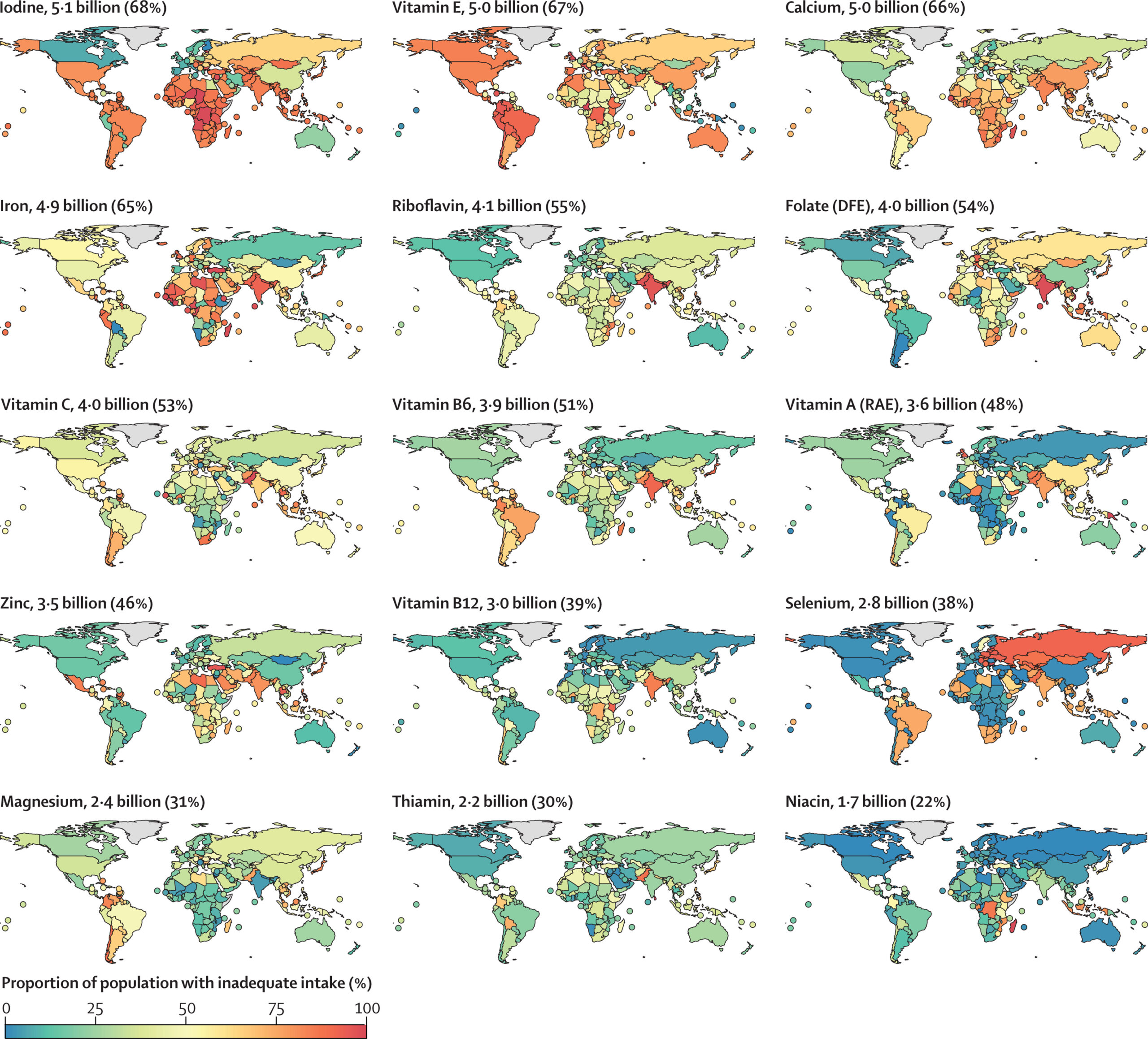
numbers from the study
Around the world, billions of people eat too much food while at the same time not getting enough nutrients.
But how bad is the situation really?
Let us look at some nutrients and how many individuals are estimated to be deficient globally right now. The cited study wanted to determine how the situation looked for 15 essential micronutrients.
So this study did not look at all nutrients. Just 15 of them.
Data came from a 10-year-long period from 31 different countries, and that data was then combined with another data set from 185 countries to provide an estimate for nutritional deficiencies for roughly 99% of the current worldwide population.
Iodine.
5.1 billion people. This is roughly 68% of humanity that´s not getting enough Iodine from their food intake.
Vitamin E
5 billion people, around 67% of the global population.
Calcium.
5 billion people.
Iron.
4.9 billion people.
Niacin:
“Only” 1.7 billion people are deficient in Niacin, which is about 22% of the global population. This happened to be the lowest deficit measured in the study, and it is still close to 2 billion people.
More nutrients.
Thiamin, 2.2 billion people, and magnesium with 2.4 billion people.
Having said that, there are many other nutrients not mentioned above, such as B12, that are far too often inadequate too. Take a look at the cited study down below, or browse the image from the study to get a big picture sense of just how bad it is.
Oh, have you ever heard of scurvy? Yes, that age-old sailor disease that once upon a time forced ships to start stockpiling vitamin C-rich fruits and foods to prevent their sailors from dying.
Well, scurvy is still a very real issue, and more than 4 billion people do not get enough Vitamin C in their daily food.
Same thing with iron, riboflavin, and folate.
This is why you should not listen to well-meaning but confused or misinformed people who propose that you could perhaps only eat whole eggs ( or any other single food source ) just because eggs could theoretically provide enough protein & energy if you eat enough of them.
Sure, eggs are a nutritional powerhouse, but they contain no trace amounts of Vitamin C.
Not to mention that most people would find it very hard to even consume 20 to 40 eggs per day.
Yes, I have had conversations such as the “eat nothing but eggs and you will be fine” happening. But, a high-protein, high-satiety diet also needs to be nutritionally complete long-term, speaking, and you can not create a sustainable long-term food habit eating 1 food item.
Not with eggs, and not with any single food source.
So it is important that you craft your food plan with a variety of high-quality, high-protein foods, together with a variety of whole plant-based foods. It is easy to get enough protein, and very beneficial, but it is also important that you meet all of your micronutrients in order to stay healthy over time, and that last bit is why we need a big enough array of daily food choices.
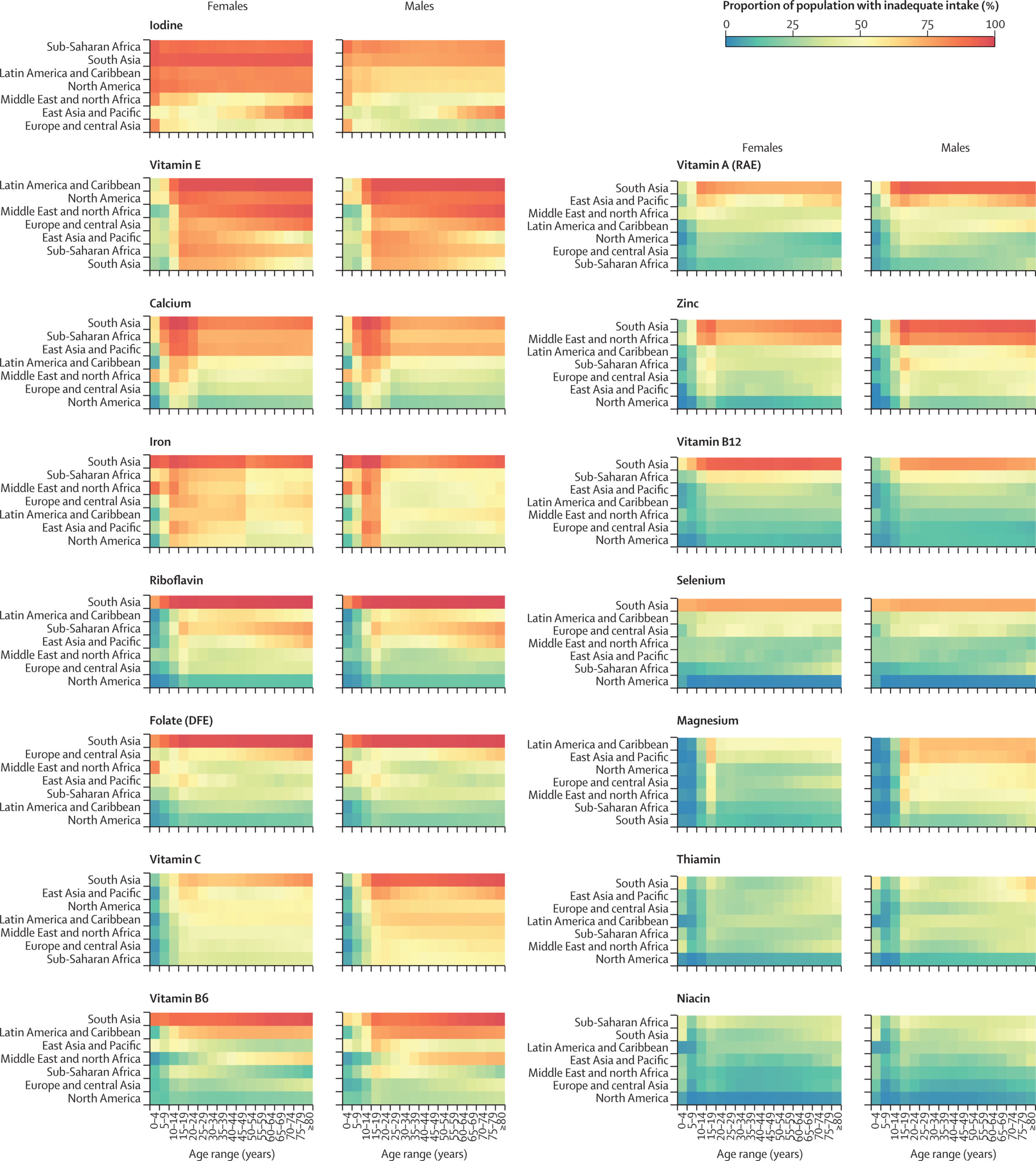
Cited study.
1. Global food deficiency in billions of people.
This article is available on Medium.
Read this article on Medium if you are a paying Medium subscriber.
strength by fitness
podcasts
recent articles
Type II Diabetes: How Fitness and Nutrition Can Mitigate and reverse t2d. Exclusive Member Article.
IF you want to prevent type 2 diabetes, or reverse it, if the damage has already been done, as it has for hundreds of millions of people around the world, you have three massively powerful and influential habits at your disposal. Welcome to another fact-based member-exclusive Strength By Fitness article.
Members & Clients Recipe: Tofu, dates & orange smoothie. High SPC & Protein.
Our Tofu, dates & orange smoothie provides 56g of Protein, 22g of fiber, and a very high SPC between 66 & 80. That makes this another tasty Strength By Fitness winner. Paid Reader & Client Exclusive Recipe.
Quality Sleep Is Just Another Habit.
Quality sleep comes from a few key pillars in a healthy lifestyle.
Yes, quality sleep is just another habit we build over time with nothing more than our own choices. In this article, Coach Mike from Strength By Fitness will teach you how to do it too.
The Man Who Remained Young. Healthy Habits vs Ageing: Exclusive Member Article.
Strength training, injury-free, 80-year-old men can be as strong as a 35-year-old gym goer. And running is no different. All it takes are maintained habits. Exclusive Strength By Fitness Member Article. Join today, only 9$ Per Year.
Genetics vs Fitness Habits: Part IV. Exclusive Member Article.
Good habits will always move everyone in the right direction. Your genes then decide just how far your ceiling goes. For every single person on the planet, this means becoming way healthier and fitter over time, and as long as you maintain those habits, the positive outcome won’t go away.
Regular Exercise Habits For Children Provide Massive Benefits All Through Life
Fitter kids rapidly become healthier kids.
These fitter and healthier kids eventually go on to become much fitter and healthier adults with a higher quality of life, better physical capacity, work performance, cognitive health, and ageing trajectories.
If they mainta…
We appreciate you
so stay healthy & never stop training
Contact
Private In-App Messaging is Available For All App + Coaching Clients
Adress
Coaching
Available Online on IOS & Google Play, and In-person.
Copyright 2025 Strength By Fitness.
